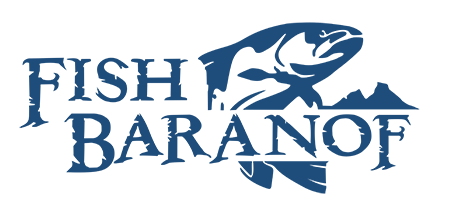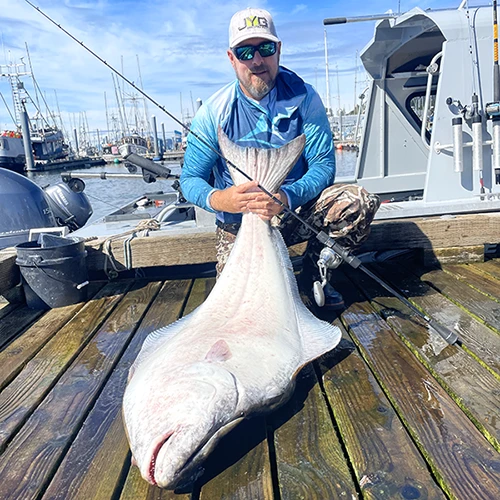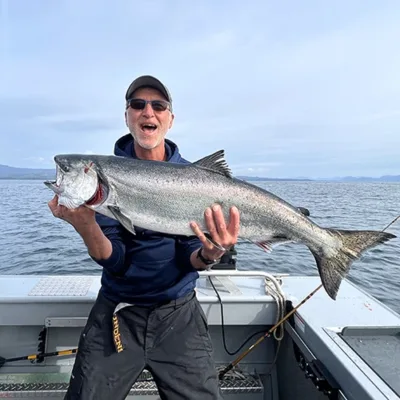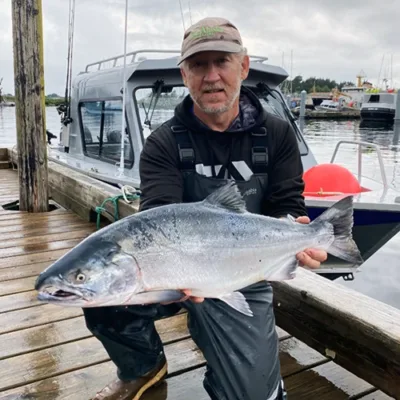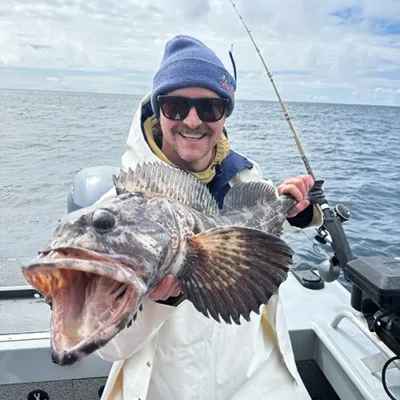 King Salmon Fishing
King Salmon Fishing
Alaska king salmon fishing is on most anglers’ bucket lists when they come to Alaska on a fishing trip. Sitka is well-positioned midway up the Alaska panhandle, very close to the open waters of the North Pacific, and that makes it a prime location to intercept migrating king salmon.
King salmon are the largest of the five Pacific salmon species native to North America and average about 20 pounds for a mature fish. Also referred to as Chinook, their rich, fatty meat is prized table fare. Their size and strength make them a highly sought-after quarry. They are the Alaska state fish and rightfully so.
Fishing Techniques
Alaska king salmon fishing is usually accomplished by trolling, but fish can also be caught mooching and jigging. When trolling, anglers typically fish using downriggers, flashers and either a lure or bait. Common lures include Silver Horde Coho Killers, Silver Horde Kingfisher spoons, and hoochies.
We recommend variations of greens and blues, and patterns with Glow or Ultraviolet are effective if fishing deeper than 50 feet or so. Since needlefish are so prolific in the area, the Silver Horde Coho Killer has proven deadly. Greens, purples, blues, cop car, and patterns with Double Glow and Ultraviolet all will catch fish.
The Herring Aide pattern in both lures is another good choice. If herring seem to be more prevalent than needlefish, the Silver Horde Kingfisher spoon, with its wider profile, is a better choice. For those that prefer to troll bait, herring is the usual choice. Herring can be plug-cut or fished whole. For whole herring, a herring helmet of some kind such as a Pro-Troll E-Rotary Bait Holder will keep your bait spinning properly for long periods of time even at somewhat-fast trolling speeds. It keeps the bait in place until a salmon eats it and that’s Alaska king salmon fishing!
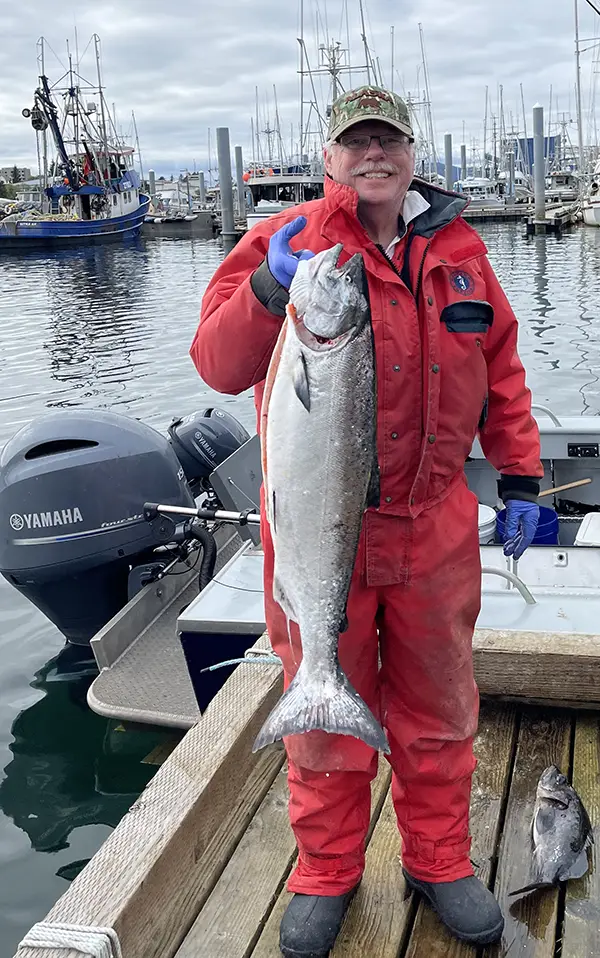 Trolling Flashers
Trolling Flashers
For flashers, use 11-inch flashers of your choice and color. We recommend the Pro-Troll HotChip flasher. Triangular flashers like those made by Shortbus are also popular. Use quality ball-bearing swivels like those made by Sampo to connect your mainline to the flasher and flasher to the leader. For leader material, 30- to 40-pound-test fluorocarbon works well; others prefer nylon monofilament. With leaders, length is a function of lure action. A lot of it boils down to personal preference. Generally, lures with built-in action like spoons can be fished on leaders from 30- to 48”. For bait, 40- to 60” works well. For hoochies, which have no built-in action, shorter leaders of 28- to 40” are best.
Rods for Kings

Alaska king salmon fishing rods are normally casting rods, typically 9- to 10½ feet long, with medium-heavy to heavy power and rated for at least 10- to 25-pound-test line. King salmon can eclipse 30 pounds, and much larger fish are landed every year, so a rod with a soft tip and moderate action, but with a stout butt section works well with downriggers and is a good match for big kings. Reels should be able to house 200 yards of 50- to 65-pound-test braid or a similar amount of 25- or 30-pound-test mono. A quality drag is very important because a big king can quickly destroy a sub-par reel. What’s more, in Sitka it’s not uncommon to have a good-sized halibut take a trolled or mooched bait.
King trollers typically target 50- to 150 feet in the water column and troll about 1½ to 2.5 mph. Kings will often hold closer to the bottom, so start high and if you don’t find kings, move your gear closer to the bottom. Watch your fishfinder; it will show you concentrations of bait and sometimes small groups of salmon. Fish those depths. Some trollers prefer to fish within 10 feet of the bottom in water from 60- to 150 feet deep. Troll with the tide, making long trolls, and be prepared for take downs at any time, especially on the turns when baits are rising and falling, speeding up and slowing down. Locations like Vitskari Rocks, St. Lazaria Islands, Cape Edgecumbe and Biorka Island are popular king salmon trolling spots.

Mooching for Kings
These same areas can produce for anglers mooching herring, too. Mooching is especially popular at Cape Edgecumbe, and is sometimes done from a drifting boat. Other anglers prefer to anchor the boat and then mooch. Mooching anglers typically fish plug-cut herring with 4- to 8-ounce crescent sinkers. The same rods and reels used for downrigger fishing are suitable for mooching as well. The bait is lowered to the depth at which fish or bait are showing on the fish finder, and worked up towards the surface, then free-spooled back down to depth. The sequence is then repeated until you get a bite.
When you get a bite, give the fish time to take the bait well. The bite usually registers as a series of taps. Some anglers feed a couple feet of line to allow the fish to easily take the bait. When the fish has the bait, the rod will become slightly heavy as the taps change to a tug or tugs. Set the hook. Kings will often take the bait as you’re free-spooling it down to depth. When they do this, your line will go slack. If the line goes slack and if you’re sure it isn’t just from the sinker hitting bottom, wind until the rod loads, then set the hook.
When you come fish with us at Fish Baranof, you can set your own schedule and fish for whatever you want. With halibut, rockfish, and lingcod all available while the kings are running, you are sure to have a smorgasbord of options. Many will include Alaska king salmon fishing in their agenda for the chance to battle the largest of all the Pacific salmon.
